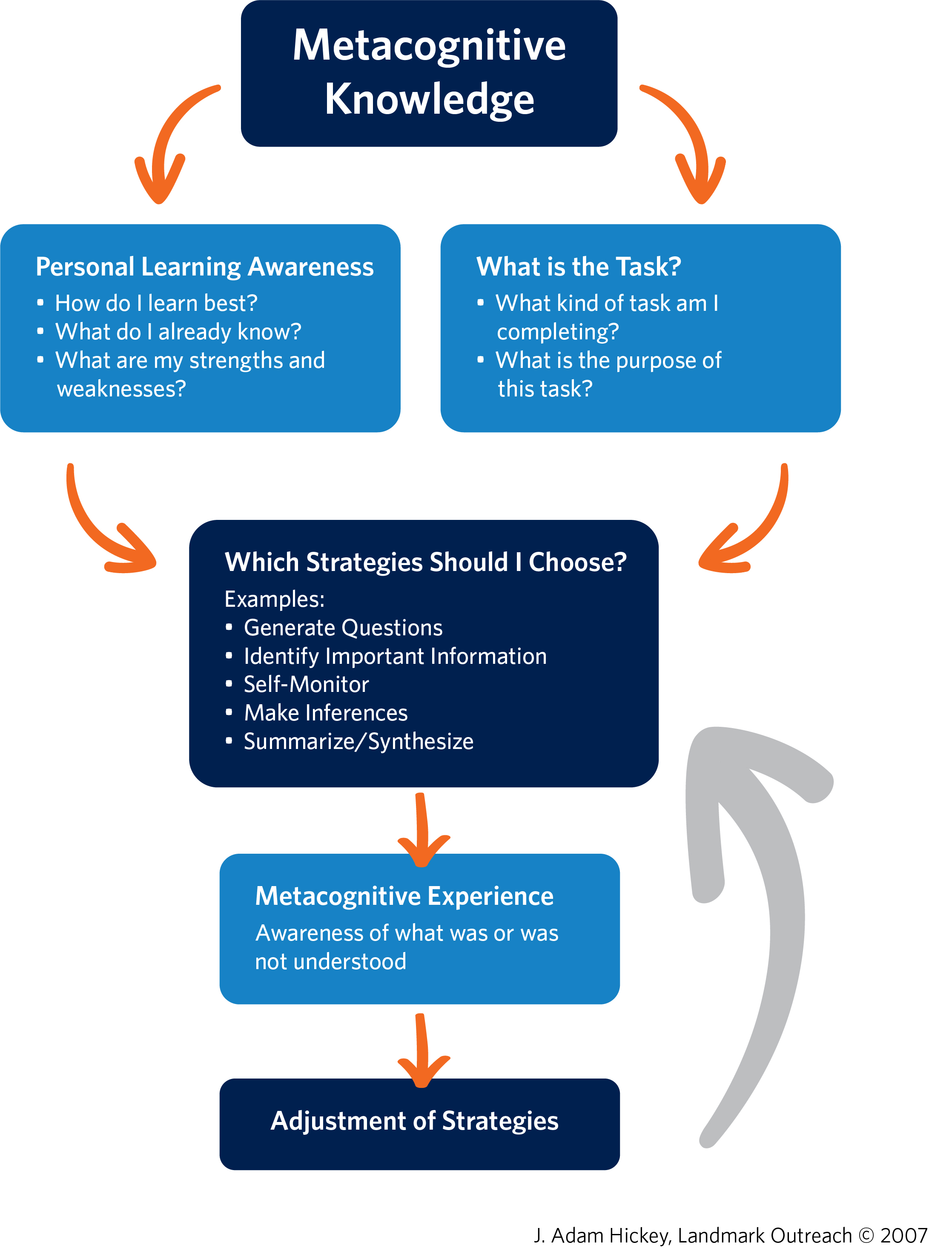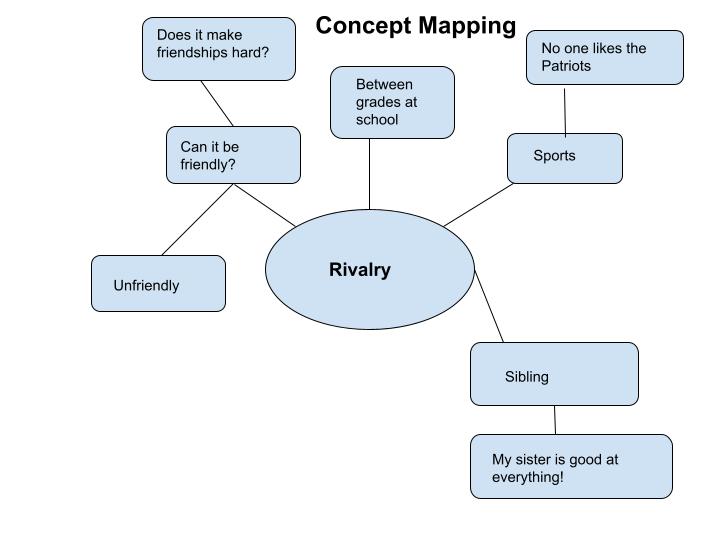Include Students in the Learning Process
Landmark’s Sixth Teaching Principle encourages teachers to create opportunities to include students in the learning process, and this allows students to become aware of how they learn and why certain skills benefit them. As a result, students are more motivated and more likely to apply those skills when working independently. In short, an included student becomes an invested student who is eager to learn. At its core, this principle asks students to engage in metacognition. Metacognition can be defined as “the processes used to plan, monitor, and assess one’s understanding and performance. Metacognition includes a critical awareness of a) one’s thinking and learning and b) oneself as a thinker and learner” (Chick, 2013).
Metacognitive practices should be a cornerstone of a language-based classroom. Explicit instruction in metacognition allows students to make deep connections between what they are reading and previously learned material. It also helps them to make sense of what they are reading and learning to determine when material does not make sense and to decide which strategies to employ to help overcome obstacles. Encouraging this type of critical reflection helps students to become flexible learners and enables them to examine their performance on an academic task and ultimately creates a deeper understanding of content. When students know what they know, know what they don’t know, and are explicitly taught to apply strategies, they will be more likely to “actively monitor their learning strategies and resources and assess their readiness for particular tasks and performances” (Bransford, Brown, & Cocking, 2000, p. 67).
To help students establish awareness of their own thinking and learning, teachers can work with students using the below flow chart:

When students can reflect on their learning to assess their personal understanding and the effectiveness of their approach, they are more able to adjust how they learn and adjust the strategies they’ve chosen.
Strategies to Support Metacognition During Reading
To help students achieve this level of self-reflection and understanding of how they learn, it is important to explicitly teach active reading strategies to support metacognition and comprehension. Showing the connections between ideas and concepts is an important part of the metacognitive process. When previewing an upcoming reading, concept mapping (Ritchart, Church, & Morrison, 2011) is a great tool to start students thinking about a concept. For example, having students focus on how a single vocabulary word can be connected to an overarching theme. Prior to reading a short story about a rivalry between two friends, creating a concept map of the word rivalry can be an excellent pre-reading activity that can show the layers of meaning in a single word and how that word can define an essential question or theme within the text.

After reading, discussions are also an effective forum for collaborative learning and for reflecting on what students understand or do not understand. Ritchart, Church, and Morrison (2011) suggest that engaging in reflective dialogue can help students self-assess what they know or don’t know about a reading. Consider the following when structuring discussion:
- Ask students to identify one main concept from the reading and support that thinking with a piece of evidence or a core idea. Students can be asked to summarize a main point, to paraphrase a passage from the reading, or to locate direct text evidence to support their thinking.
- Ask students to write down their questions about the reading.
- Ask students to make a connection from the reading to previous background knowledge or information learned earlier in the unit.
- Ask students to draw the concepts they are learning.
Another popular reading strategy that encourages students to organize their thinking and understanding of the form and structure of texts is Survey, Question, Read, Recite, and Review or SQ3R. Developed by Francis P. Robinson in 1946, SQ3R provides a step-by-step process for tackling reading assignments and gives a framework for students to process a large amount of new information.
| SQ3R | Step Actions |
| Survey |
|
| Question |
|
| Read |
|
| Recite |
|
| Review |
|
Explicitly teaching active reading strategies is crucial for bolstering both metacognitive abilities and comprehension skills. When teachers include students in the learning process, it can foster students’ awareness of their own learning and which strategies work best for them.
References:
Bransford, John D., Brown Ann L., and Cocking Rodney R. (2000). How people learn: Brain, mind, experience, and school. Washington, D.C.: National Academy Press.
Chick, N. (2013). Metacognition. Vanderbilt University Center for Teaching. Retrieved March, 2024 from https://cft.vanderbilt.edu/guides-sub-pages/metacognition/.
Ritchhart, Ron; Church, Mark; Morrison, Karin. (2011). Making Thinking Visible. Hoboken, NJ: Jossey-Bass.



